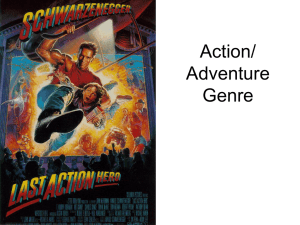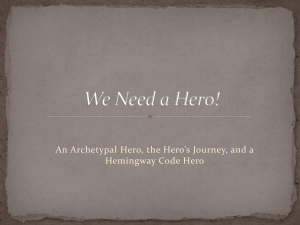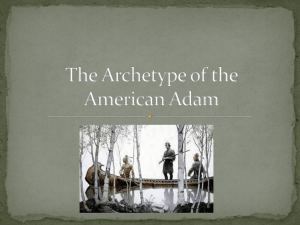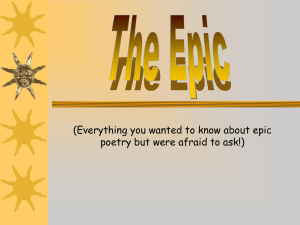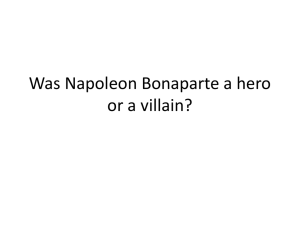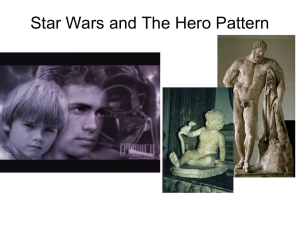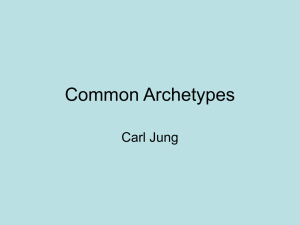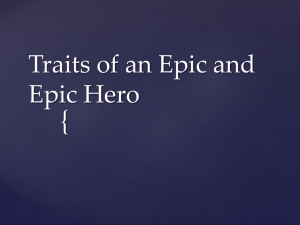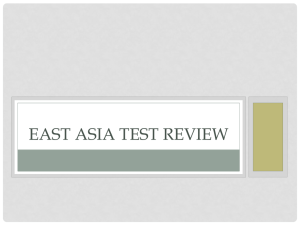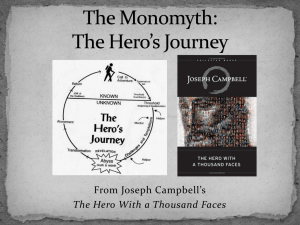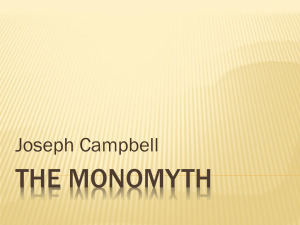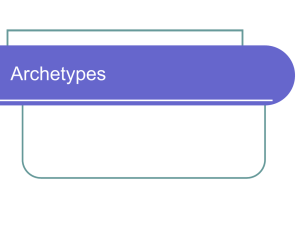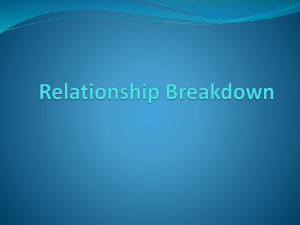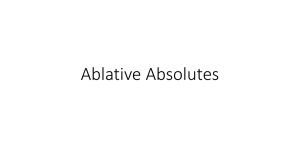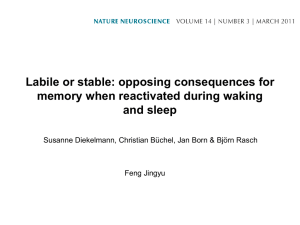What is a hero fantasy?
advertisement
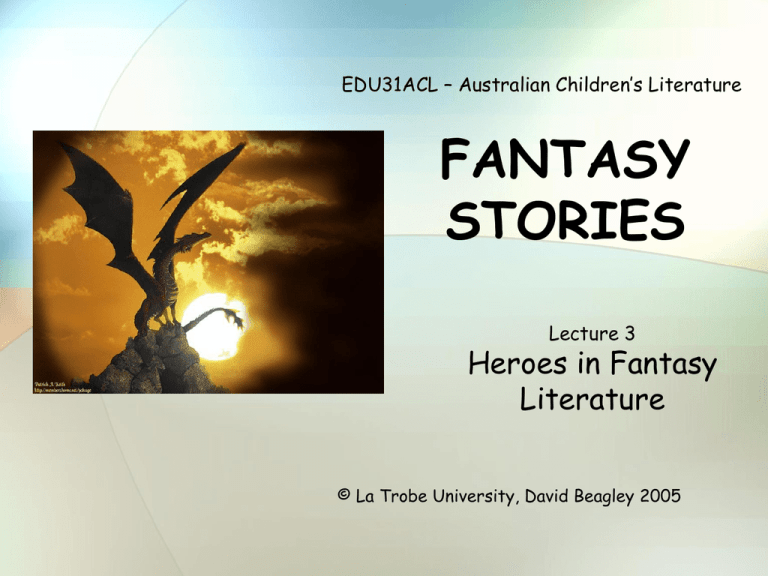
EDU31ACL – Australian Children’s Literature FANTASY STORIES Lecture 3 Heroes in Fantasy Literature © La Trobe University, David Beagley 2005 Recommended Reading • Natalie Babbitt (1987) Fantasy and the Classic Hero, in Innocence and experience: essays and conversations on children’s literature, ed. Barbara Harrison & Gregory Maguire. Boston: Lothrop, Lea and Shepard (copy in lecture notes on Short Loan) Definitions What is a hero? • • • • Inherent values? Gender? Defined by circumstances? Therefore, defined by story Universal patterns in hero fantasy • What is a hero fantasy? • Forms and structures typical and repeated • Most common are Quest stories • Indicates traditional origins in myths, legends and epics – e.g. Iliad, Odyssey, Beowulf, Arthurian cycle • Despite grand scope, focus is on the individual Universal patterns in hero fantasy •Provides common structure in which authorial individuality or particular details can be explored •Danger of cliché and formulaic story/characters Universal patterns in hero fantasy From Robert Campbell, The Hero with a Thousand Faces the fantasy hero follows an ancient path, universal to all cultures, and that journey describes truths about life and living. See also Carl Jung – archetypes • The key stages of the journey are: • SEPARATION • INITIATION • RETURN Universal patterns in hero fantasy • The Call to Adventure • The Herald • Threshold • Succession of Trials • Protective Figure • Victory/quest fulfilled • Recrossing the Threshold Universal patterns in hero fantasy The Call to Adventure • destiny has called the hero • hero’s spiritual centre transferred from within his/her known world to a place unknown. • the place holds treasure/danger for the hero • place may be a distant land, forest, mountain top, dream etc. • usually called by a character, though could also be an artefact, prophecy etc. Universal patterns in hero fantasy The Herald • can be ugly/ beautiful, frightening/curious, but is usually distinctive • summons the hero to cross a threshold • can take a human or nonhuman form Universal patterns in hero fantasy Threshold • • • • can be from the real world into mystery life into death waking state into dream or simply setting off on a physical journey Universal patterns in hero fantasy Succession of Trials • represents coming face-to-face with our confusions, terrors and pain that stop us from achieving spiritual perfection • exposure/danger symbolise growth for hero • Learning process, initiation into knowledge • often symbolic cutting the apron strings, capacity for independence Universal patterns in hero fantasy Protective Figure • • • • • • hero does not have to cross the threshold alone. gives assistance sometimes in the form of charms hero cannot survive without this protection represents benign protecting power of destiny Usually not parent: parents can be symbols of overprotection which may retard development of character Universal patterns in hero fantasy Victory/quest fulfilled • the hero must learn a symbolic lesson before reaching adulthood/maturity/fulfilment • often the lesson is what we strive for has been ours all the time – the strength is within, not an external aid. Universal patterns in hero fantasy Recrossing the Threshold • • • • • hero survives trials and learned the lesson free to return to the real or waking world. brings new knowledge with him/her new knowledge may enlighten the existing world hero must return home Universal patterns in hero fantasy Recrossing the Threshold • final reward, happily ever after often takes place after the symbolic story has finished, left up to the readers’ imagination; symbolic of heaven after death • heavy price to pay for refusing to return home; choosing immaturity, not growing up, withdrawing from humanity • refusing to return suggests reality is not worth returning to • completes the circle, brings satisfaction General criteria for evaluation: 1. 2. 3. 4. Is the story well structured? How well does the story teller present the elements of the narrative so that there is both predictability (in relation to the type of literature and its patterns) and surprises (authorial inventiveness within those standard patterns)? Does the story offer worthwhile themes? (Worthwhile does not necessarily mean solemn.) Is there a clear sense of a particular age for the readership of the book? What scope is there for active participation by the reader?
